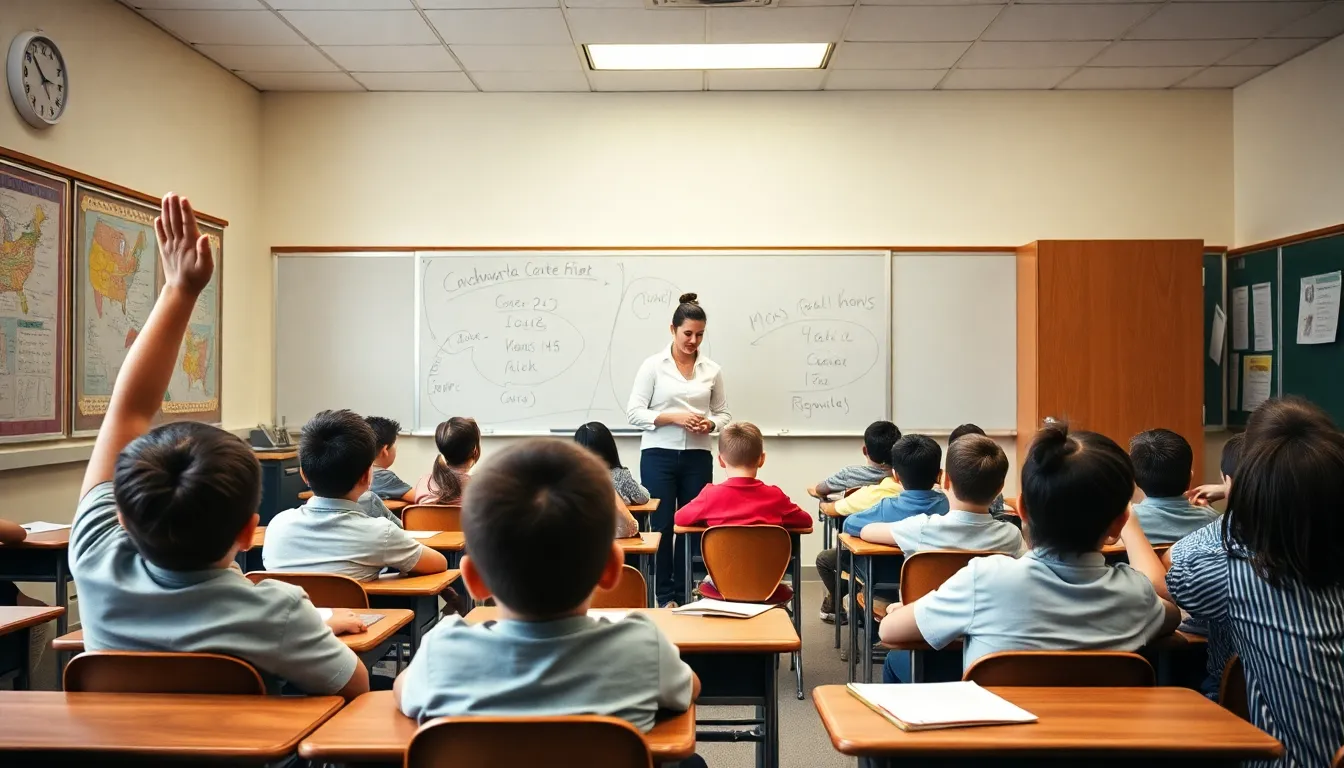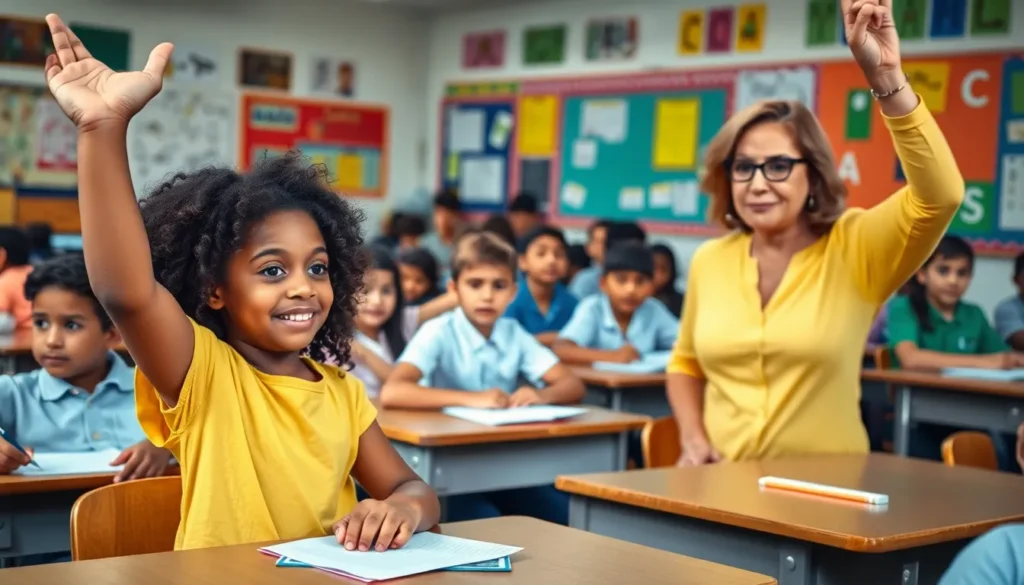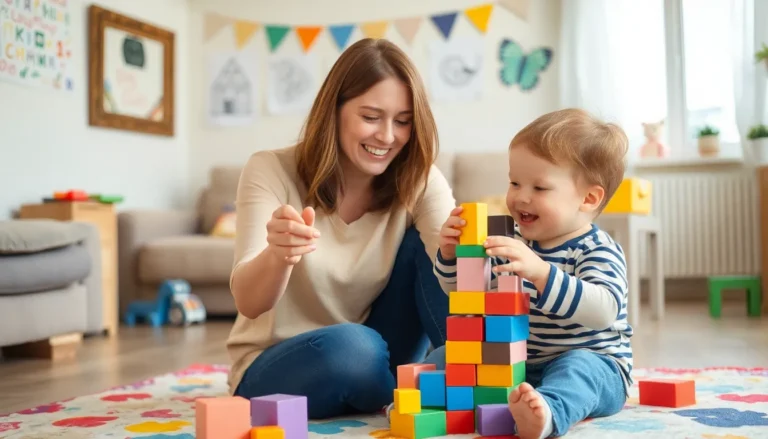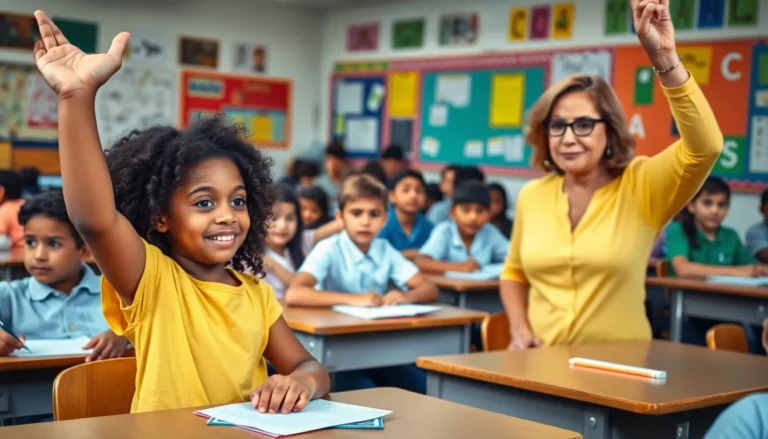Table of Contents
ToggleEvery teacher knows that school isn’t just about math and science; it’s also a wild ride through the rollercoaster of human behavior. From the chatty class clown to the master of distraction, behavioral issues can turn a calm classroom into a circus faster than you can say “pop quiz.” But what if these antics aren’t just annoying? They might be the key to unlocking deeper insights into a child’s needs.
Understanding these behavioral quirks can make all the difference. It’s not just about discipline; it’s about connection, communication, and maybe a little bit of comedy. By addressing these issues head-on, educators can create an environment where learning thrives and laughter reigns. So buckle up as we dive into the colorful world of school behavior, where every challenge is an opportunity for growth and every giggle hides a lesson waiting to be learned.
Overview of Behavioral Issues at School
Behavioral issues at school encompass a wide range of challenges that impact the learning environment. Disruptive behaviors such as shouting, tapping, or wandering around can distract both teachers and peers. Understanding the root causes of these behaviors often reveals a child’s unmet needs, whether emotional, social, or academic.
Interactions between students play a significant role in shaping behavior. Bullying, in particular, leads to increased anxiety and decreased academic performance for victims. By fostering strong connections, educators can identify these concerns early and address them effectively.
Inappropriate behaviors may also stem from outside influences, including family dynamics or community issues. Some children act out as a means of expressing frustration or seeking attention. Recognizing these patterns enables schools to develop tailored interventions.
Collaboration among teachers, parents, and counselors is critical in creating a supportive environment. Regular communication ensures all parties are aware of behavioral trends and can work together to implement solutions. Additionally, establishing clear expectations and consistent consequences contributes to fostering responsible behavior.
Effective classroom management strategies can help mitigate behavioral issues. Techniques such as positive reinforcement, clear rules, and engaging lessons reduce distractions and encourage focus. Schools that prioritize emotional intelligence training for students often see a decline in disruptive behaviors.
The impact of behavioral issues extends beyond the classroom. Students facing challenges may struggle with long-term academic success and personal relationships. Understanding and addressing these issues not only benefits individual students but also enhances the overall educational experience for everyone involved.
Common Types of Behavioral Issues

Behavioral issues in school manifest in various forms, impacting the educational experience for students and teachers alike.
Disruptive Behavior
Disruptive behaviors include shouting, tapping, and wandering. These actions distract both teachers and classmates, hindering the learning process. Often, students engage in these behaviors to seek attention or express unmet needs. Early identification is crucial for understanding the underlying reasons for disruptive actions. Addressing these needs can lead to tailored interventions, allowing students to focus better during lessons. Implementing strategies like positive reinforcement can also reduce these behaviors and create an effective classroom environment.
Aggressive Behavior
Aggressive behaviors involve physical or verbal hostility. Students may exhibit actions such as hitting, bullying, or using abusive language. These behaviors often derive from emotional distress, family issues, or frustrations with academic challenges. Early intervention is vital in addressing aggressive tendencies before they escalate. Counselors and teachers should develop individualized strategies to support affected students while fostering a safe environment for all. Promoting empathy and conflict resolution skills can help mitigate aggressive behavior and enhance classroom dynamics.
Withdrawal Behavior
Withdrawal behaviors manifest as disengagement, avoidance, or social isolation from peers. Students may struggle to participate in classroom discussions or activities, often hiding in the background. These behaviors can stem from anxiety, low self-esteem, or past negative experiences. Recognizing withdrawal behavior allows educators to implement supportive measures, encouraging social interactions and participation. Building a strong teacher-student relationship plays an essential role in helping withdrawn students feel secure and valued in the classroom environment. Engaging these students through small group activities can gradually boost their confidence and involvement.
Causes of Behavioral Issues at School
Behavioral issues in school often stem from several underlying factors. Recognizing these causes helps educators create more effective interventions.
Environmental Factors
Physical surroundings significantly influence student behavior. Classroom layout, noise levels, and overall comfort can lead to distractions. For instance, excessive noise can heighten anxiety and disrupt focus. Conversely, a well-structured environment fosters concentration and participation. Additionally, transitions between activities affect students’ behavior; abrupt changes may trigger restlessness. External factors, such as community violence or instability, also create stress that impacts school performance.
Psychological Factors
Emotional well-being plays a crucial role in student behavior. Conditions like anxiety and depression can manifest as withdrawal or aggression. Children often express unmet needs through disruptive actions when feeling overwhelmed. Support from school counselors provides students with coping strategies to manage their emotions. Self-esteem impacts behavior too; low self-esteem can lead to disengagement. Understanding these psychological factors can help educators craft supportive measures tailored to individual students.
Social Influences
Peer interactions shape students’ behaviors significantly. Bullying or negative peer pressure can result in fear and anxiety, leading to withdrawal or aggressive actions. Friendships offer emotional support, but problematic relationships may cause emotional distress. Confidence builds through positive social interactions, encouraging classroom participation. Community influences further affect social dynamics; supportive environments cultivate better behavior. By recognizing these social influences, educators can foster a more inclusive environment that reduces behavioral issues.
Strategies for Addressing Behavioral Issues
Implementing effective strategies is crucial for addressing behavioral issues in school settings. These strategies can create a supportive environment that fosters positive behavior and enhances learning.
Classroom Management Techniques
Effective classroom management techniques are essential for minimizing disruptions. Teachers can establish clear expectations by setting rules and consequences from the start. Engaging lessons capture students’ attention and reduce off-task behavior. Positive reinforcement encourages desired behaviors, rewarding students for their achievements. Consistency in applying rules helps students understand boundaries, promoting a sense of security. Regular reflection and flexibility allow teachers to adapt strategies based on the class dynamics.
Parental Involvement
Parental involvement plays a vital role in addressing behavioral issues. Communicating regularly with parents about their child’s behavior fosters a united front. Parents can provide insights into their child’s home environment, helping educators tailor interventions. Encouraging parents to participate in school events strengthens community ties and supports students. Joint efforts between home and school often lead to consistent expectations and improved student behavior. Providing resources for parents on behavioral strategies equips them to support their child’s needs.
Professional Support Services
Professional support services deliver specialized assistance for addressing behavioral issues. School counselors can provide guidance on handling emotional and social challenges. Collaborating with psychologists allows educators to identify underlying issues contributing to behavioral concerns. Accessing external resources, such as therapists, provides students with additional support. Training staff to recognize and respond to mental health issues enhances overall intervention efforts. Professional services create a comprehensive support network, promoting positive outcomes for students facing challenges.
Addressing behavioral issues at school is essential for fostering a thriving educational environment. By understanding the underlying causes of these behaviors, educators can tailor their approaches to meet students’ emotional and social needs.
Collaboration among teachers, parents, and counselors creates a support system that encourages positive behavior and academic success. Implementing effective classroom management strategies and maintaining open lines of communication can significantly reduce disruptions and enhance learning experiences.
Ultimately, recognizing and responding to behavioral challenges not only benefits individual students but also enriches the entire school community. With the right tools and support, schools can transform behavioral issues into opportunities for growth and connection.







